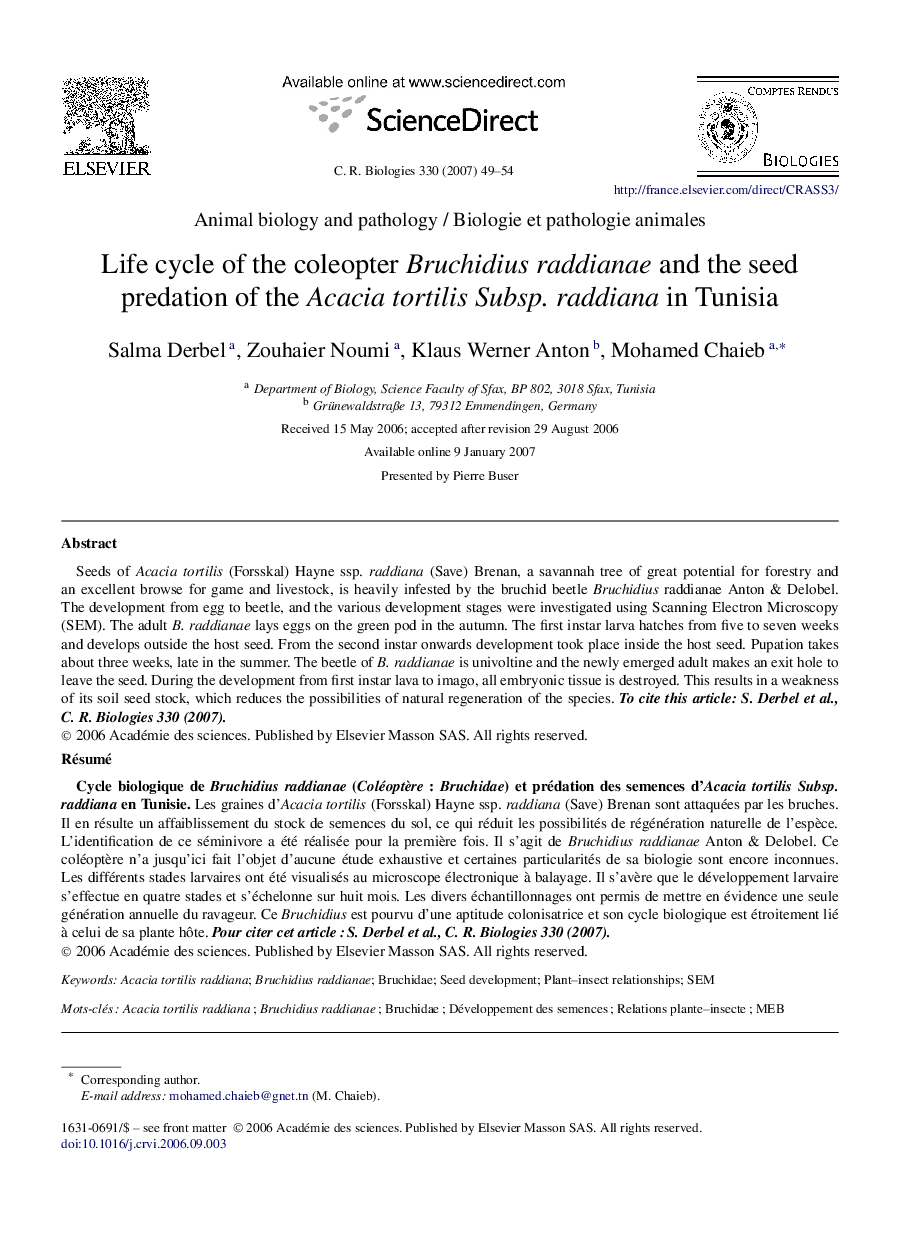| کد مقاله | کد نشریه | سال انتشار | مقاله انگلیسی | نسخه تمام متن |
|---|---|---|---|---|
| 2784480 | 1153820 | 2007 | 6 صفحه PDF | دانلود رایگان |

Seeds of Acacia tortilis (Forsskal) Hayne ssp. raddiana (Save) Brenan, a savannah tree of great potential for forestry and an excellent browse for game and livestock, is heavily infested by the bruchid beetle Bruchidius raddianae Anton & Delobel. The development from egg to beetle, and the various development stages were investigated using Scanning Electron Microscopy (SEM). The adult B. raddianae lays eggs on the green pod in the autumn. The first instar larva hatches from five to seven weeks and develops outside the host seed. From the second instar onwards development took place inside the host seed. Pupation takes about three weeks, late in the summer. The beetle of B. raddianae is univoltine and the newly emerged adult makes an exit hole to leave the seed. During the development from first instar lava to imago, all embryonic tissue is destroyed. This results in a weakness of its soil seed stock, which reduces the possibilities of natural regeneration of the species. To cite this article: S. Derbel et al., C. R. Biologies 330 (2007).
RésuméLes graines d'Acacia tortilis (Forsskal) Hayne ssp. raddiana (Save) Brenan sont attaquées par les bruches. Il en résulte un affaiblissement du stock de semences du sol, ce qui réduit les possibilités de régénération naturelle de l'espèce. L'identification de ce séminivore a été réalisée pour la première fois. Il s'agit de Bruchidius raddianae Anton & Delobel. Ce coléoptère n'a jusqu'ici fait l'objet d'aucune étude exhaustive et certaines particularités de sa biologie sont encore inconnues. Les différents stades larvaires ont été visualisés au microscope électronique à balayage. Il s'avère que le développement larvaire s'effectue en quatre stades et s'échelonne sur huit mois. Les divers échantillonnages ont permis de mettre en évidence une seule génération annuelle du ravageur. Ce Bruchidius est pourvu d'une aptitude colonisatrice et son cycle biologique est étroitement lié à celui de sa plante hôte. Pour citer cet article : S. Derbel et al., C. R. Biologies 330 (2007).
Journal: Comptes Rendus Biologies - Volume 330, Issue 1, January 2007, Pages 49–54